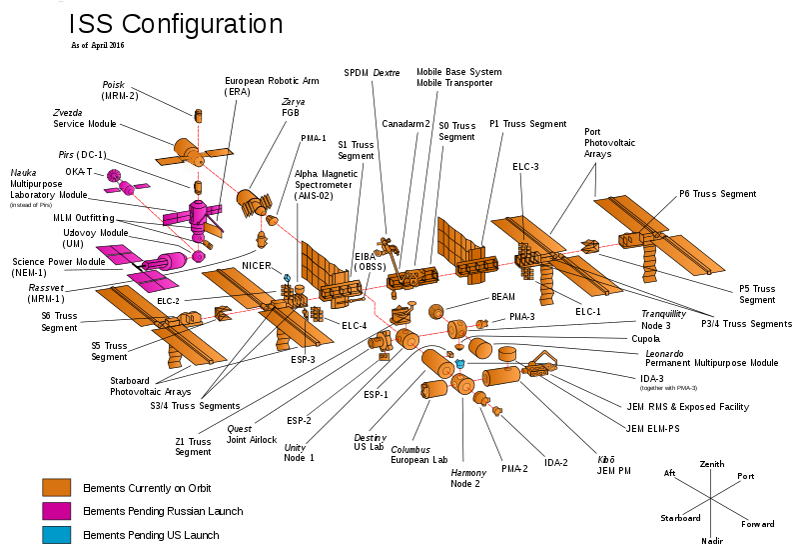Configuration Layout
The satellite has many components ranging from a small sun sensor to larger solar panels. Everything needs to be placed on the structure of the satellite. Configuration Layout is a map explaining where each component is placed within as well as on the exterior of the satellite.
Following is the configuration layout of the exterior of International Space Station as of June 2017.
Contents
Design Considerations
While preparing the configuration layout of the satellite, many considerations have to be taken into account.
Centre of Mass and Moment of Inertia
The controls subsystem have requirements pertaining to the Centre of Mass and Moment of Inertia Matrix for the satellite. These considerations play an important role in placements of the heavy components in the satellite.
Shadow on Solar Panels / Sun Sensors
The components placed on the exterior of the satellite should not create shadows on the sun devices. The solar panels will produce less energy and the sensors will give wrong readings leading to power shortage or misalignment of the orientation of the satellite respectively.
Communication Considerations
If the antennas are fixed with respect to the satellite the antennas need to be placed such that the maximum gain is in the direction of earth vector.
Also, to establish link with the GPS satellites in GEO orbit, the antenna for the GPS receiver should be placed such that maximum gain is in the direction of the GEO satellites.
Integration Considerations
To reduce the mass of the wires between the different electrical boards and sensors, the components should be placed as near as possible.
Electromagnetic Considerations
Some components are sensitive to the electromagnetic inductions produced due to other components, special care has to taken while placing these components.
Also, sensors like magnetometer (used for measuring Earth’s Magnetic Field Vector) should be placed such that magnetic fields produced by other components at the sensor is minimized.
If you are done reading this page, you can go back to Mechanical Subsystem
